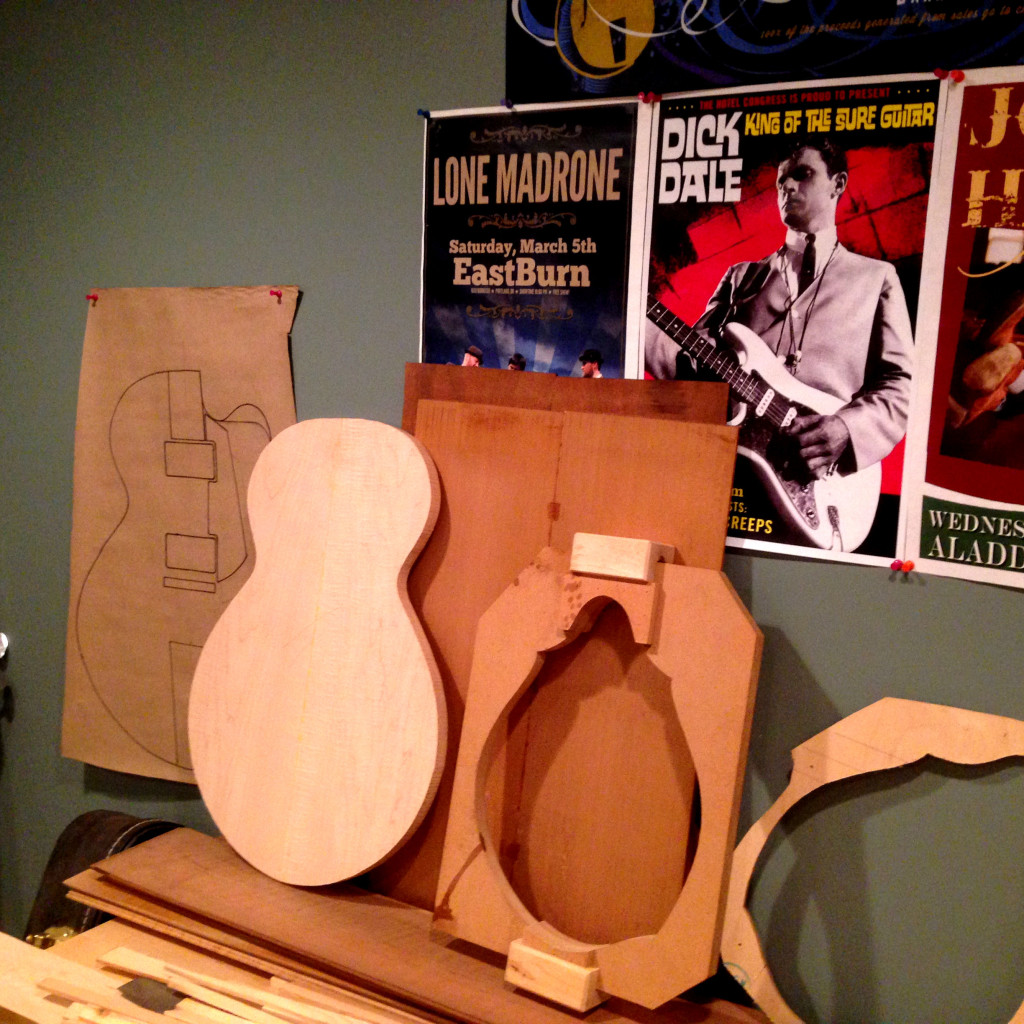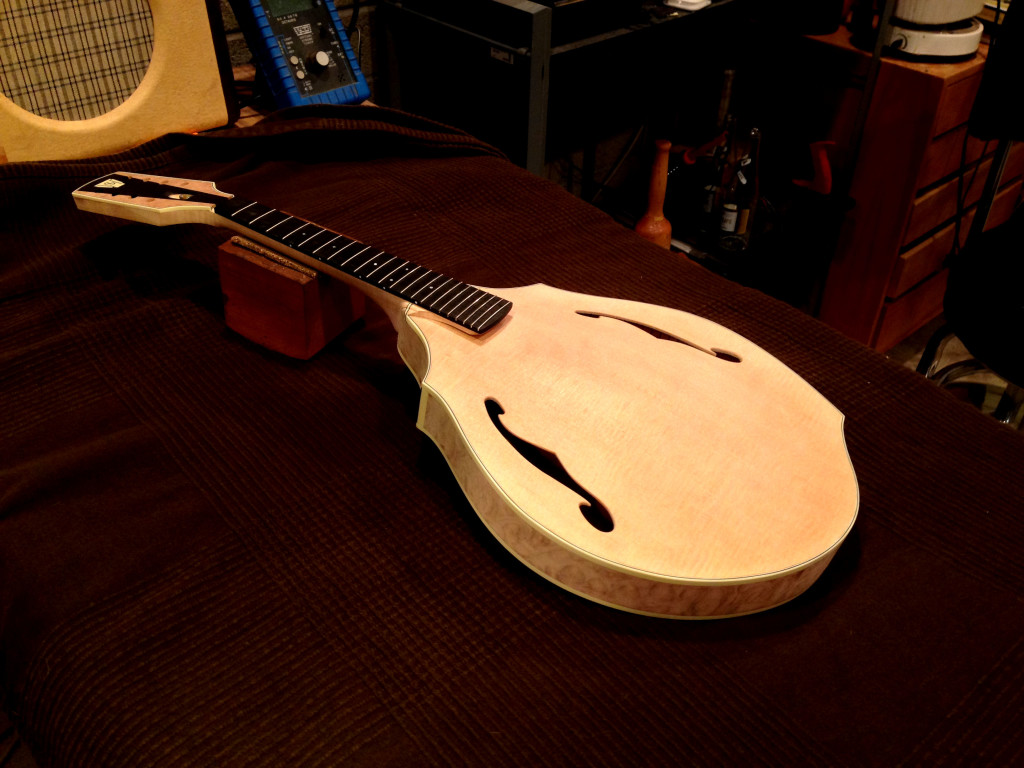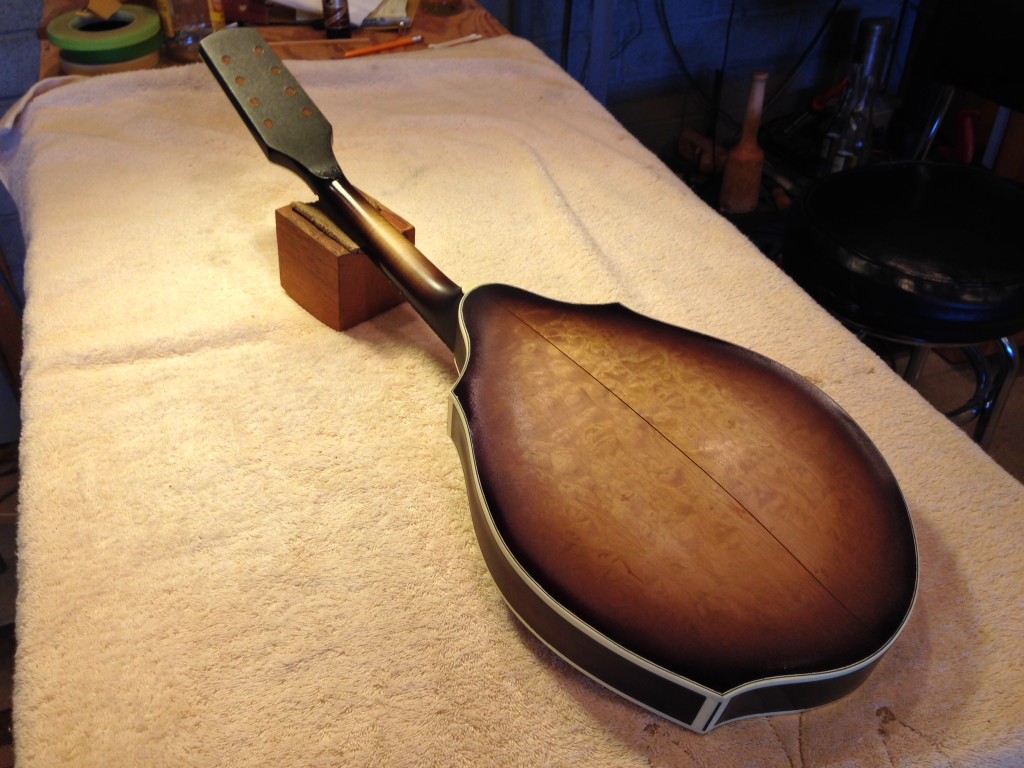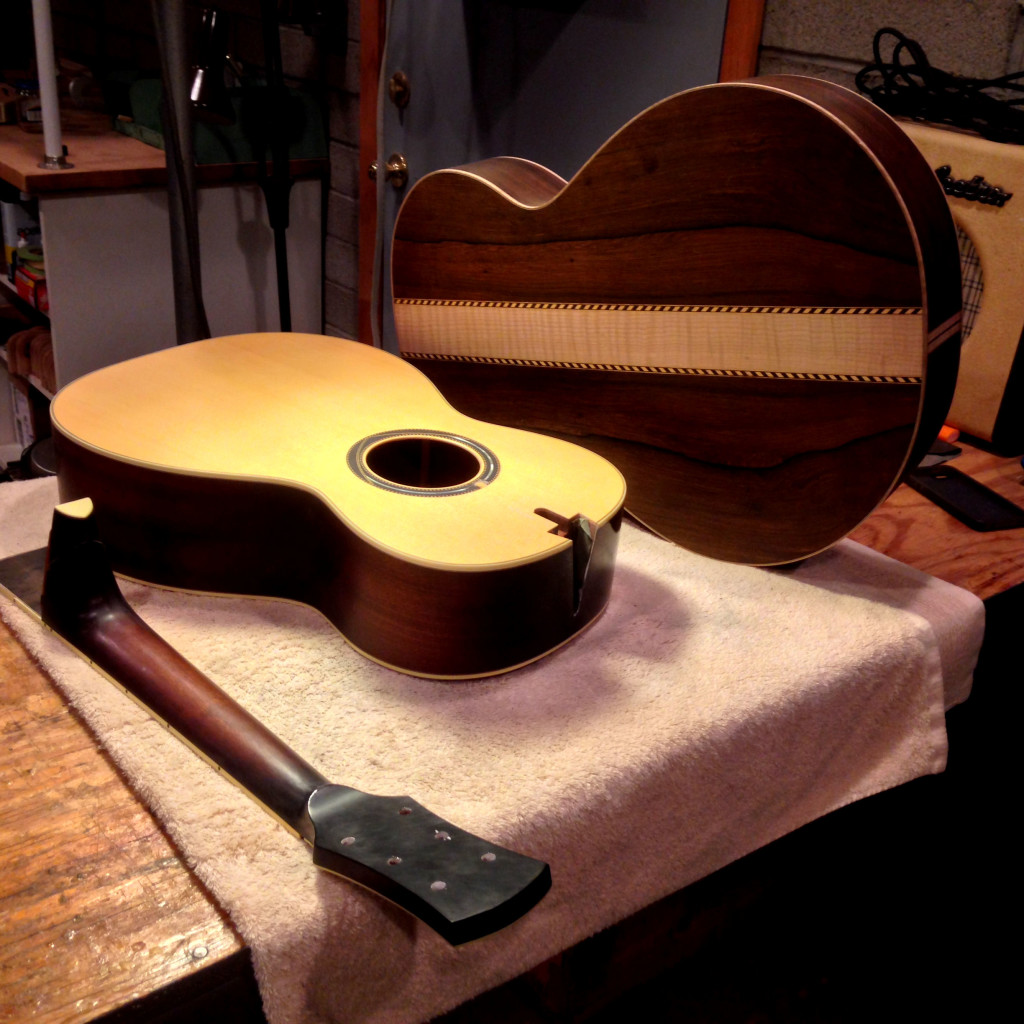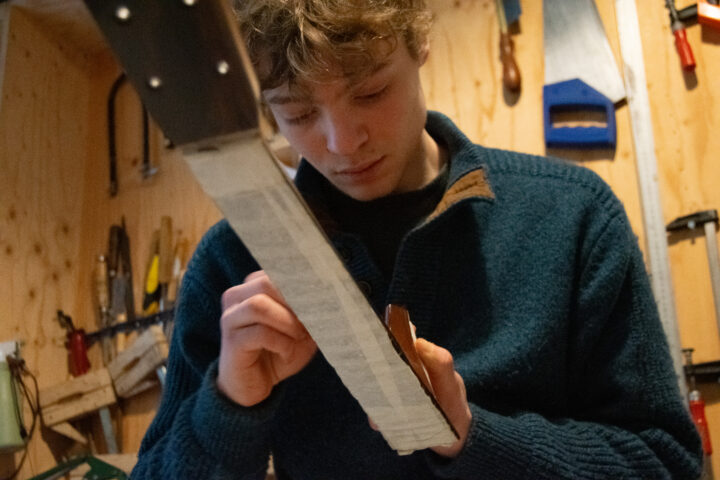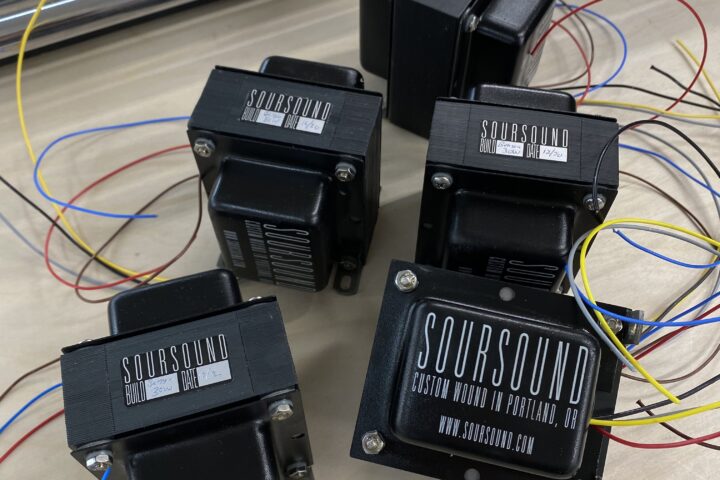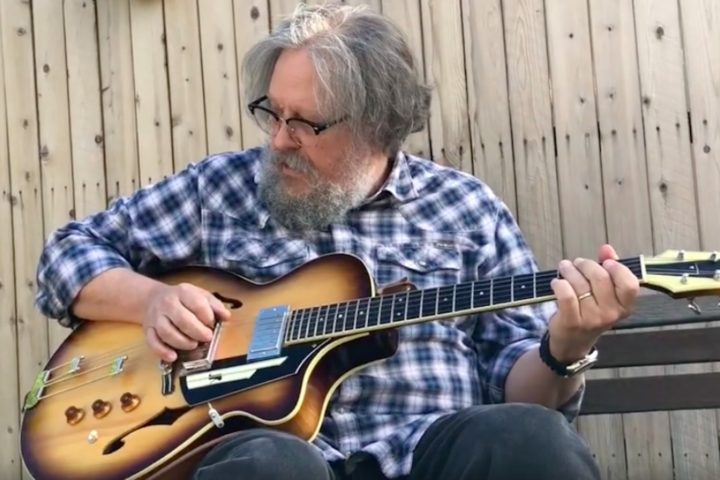Though he may not be a household name, Stephen Stratton has been immersed in the guitarmaking industry for several years. Upon graduating from Roberto-Venn School of Lutherie in 1998, Stratton paid his dues working for C. Fox Guitars, Allied Lutherie and builder Saul Koll. He’s now building custom instruments as Stratton Guitars out of his Tucscon, Arizona workshop. Read more about his work here.
FJ: Tell me a little bit about your background, how you got into building.
Stephen Stratton: Well, I went to the Roberto-Venn School of Lutherie in Phoenix in 1998. From there, I was really fortunate to get a job working with Charles Fox up at C. Fox Guitars in Healdsburg, California. I worked there for about three years. That was really a great opportunity for me because it was a small acoustic shop. I think there were about eight people working there. They were really, truly handmade instruments and I was in charge of making the bodies of the acoustic guitars. I had a big part in making about 500 instruments while I was there.
That shop closed down in, I think, 2000. I ended up going around the corner to work with Todd Taggart at Allied Lutherie. Todd had started LMI Tonewood Supply in the ‛70s and, in 2000, he started Allied. I ended up being the shop manager over there and worked with them for a few years, grading thousands of sets of wood. It gave me a really good education in the materials that these things are made out of.
From there, my wife and I moved to Portland, Oregon. We were there for about 10 years. In that time, I was able to work with Saul Koll, helping him make some of his electric and archtop guitars. That was another really great learning experience. Through all those years, I’ve made guitars under my name here and there, but not prolifically. They were always well-received. When we were in Portland, I started kind of doing my own thing more.
A little over a year ago, we made a move down to Tucson, Arizona. We both had some family down here, but it was also an opportunity for me to move into a bigger shop and really set things up the way I wanted to do it and do my own thing. Here it is, 15 years later, and I kind of feel like Stratton Guitars is really just beginning.
FJ: We first heard about you through our mutual friend (and musician) Jon Rauhouse. You not only built a guitar for him, you also shot some cool videos with him.
SS: I started doing these sessions on my website. They started as folks that play my guitars or friends of mine that wanted to demo a guitar or something for a video, a snapshot of people playing some music with these instruments. Jon has an OM model that I made for him years ago and he did some videos along with Megyn Neff, who’s a fantastic violin player. They did three videos for me. From that, the response was really great and he ended up actually recording an EP called Songs From the Stratton Sessions and releasing that. That was about a year ago. That was a really cool project to be involved with.
FJ: What’s on your bench right now?
SS: At the very moment, I have a mandolin that’s kind of a take on a two-point, A-style mandolin. At this point, the clientele that I’ve ended up with have been requesting different things, which is really fun. The next things up on the block are kind of a 335-style electric guitar. There’s a nylon string guitar on order, a ukulele, a 12-string flat top steel string. Stuff is kind of all over the board and that makes it a lot of fun because everything is really totally custom at this point.
Being able to move around and do these different things definitely keeps me interested and keeps me learning. The more custom stuff you do, the more you know. Every piece requires some amount of design work and some amount of figuring out how to make the thing.
FJ: How are you building the mandolin? What woods are you using?
SS: It’s quilted maple back and side and sitka spruce top and a maple neck. It’s pretty traditional in wood selections. The styling of it is a little tweak on an A-style, but not something that looks unfamiliar.
FJ: What about the finish?
SS: Finish is just going to be a lacquer finish. It’s going to be a sunburst. I’m getting ready to spray this, probably within the next week or so it’s going to get its lacquer. It also has my take on a snakehead headstock.
FJ: Some of your instruments seem inspired by the Art Deco movement. How does having an art background influence your guitar building?
SS: I went to the Colorado Institute of Art in Denver when I was just out of high school. That was kind of a beginning of understanding design and composition and balance. All of those things are really important. When you look at anything as a whole, how does one part relate to another? What draws your eye to the next element? It kind of makes me think of some of the experiences that I’ve had that were non-guitar related and I feel have been just as important in my aesthetic style.
I’ve had various random jobs over the years. I did some time as a buyer of salvaged architecture and hardware, mostly from the early 1900s. Dealing with stuff that was made in that time period gave me a huge appreciation for the craftsmanship that went into it. A lot of the aesthetic things, like a manhole cover from the 1930s, were a piece of art. People cared of what things looked like as well as how they functioned. To me, that kind of mindset is very important. I’m making a tool for somebody to use, but I want it to be inspiring for them to look at and to want to play it.
There are very few cars that you would see driving down the road today where you’d think, man, I want to drive that thing. But look at, say, a 1960 Bel Air and you drool. It’s inspiring to look at. You could just sit there and look at it all day, whether you drove it or not. That’s been lost to a huge extent in our society right now. It’s very important for me to make something that I think is beautiful, put something out in the world that’s inspiring to look at as well as being a great tool.
I would say my design goal is generally to create something that looks like it could have come out of a shop 50, 60, 70 years ago, but didn’t.
FJ: You mentioned you have a nylon-string guitar coming up. Have you done many of those?
SS: I am looking forward to it. My experience in doing nylon stringed guitars really was back in the C. Fox days. We made some guitars that, at the time, would have been called a crossover guitar. They were nylon-string guitars, but had fast necks with compound radiuses and low action. Basically, made for a nylon string player or maybe for a steel string or electric player that wanted more of a nylon sound but still had the same kind of playability.
This nylon that’s on order actually is a seven-string nylon which should be a challenge all of its own. It’s also another good example of someone saying, I want this thing that’s kind-of-classical-but-kind-of-not, so come up with something interesting. The possibilities are wide open and that’s always super exciting to me.
FJ: In general, do you favor certain tone woods over others?
SS: If someone said, make a steel-string flattop guitar, make it the way you want to make it and make it what you would consider your signature sound, I would probably make a guitar out of Cocobolo back and sides and Carpathian spruce. It’s a combination that I really like. I feel like Cocobolo just has just a really great, crisp sound and the Carpathian, pretty much any time I’ve used it, is really versatile. All things being equal, I try and always go for a clean sound with a lot of separation – very defined tones. I feel like those woods really work well for that.
I do have to say, I’m always hesitant to get into this tonewood creates this sound, kind of thing, because it’s such a generalization, but sometimes we have to generalize.
